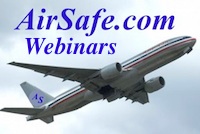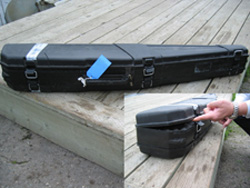On 30 July 2013, the FAA issued additional restrictions for non-US airlines landing at the San Francisco International airport (SFO). In addition to the earlier restriction that non-US airline crews use their GPS systems to help guide them during landings operated under visual flight conditions, this new restriction does not allow non-US crews to land alongside another plane during visual flight conditions. Domestic carriers are still allowed to perform side-by-side landings.
Typical restrictions on parallel runways
Under visual flight rules (VFR) conditions, the FAA allows simultaneous aircraft arrivals and departures so long as the parallel runways meet minimum spacing requirements. Runways 28L and 28R, the longest two runways at SFO, meet these minimum requirements. Runway 28L is the one being used by Asiana flight 214 when it crashed on 6 July 2013.
Why is the FAA singling out non-US carriers at SFO?
One the reasons given by the FAA for its latest restriction was so that it would "minimize distractions during a critical phase of flight." Given the recent crash at SFO, and the fact that this restriction, as well as the earlier recommended use of a GPS device during visual approaches to SFO, is only aimed at non-US airlines, the actions of the FAA imply that the organization believes that all non-US airlines are at higher risk when landing under VFR conditions at SFO.
These decisions of the FAA would make sense, and would be justified, if the FAA could show a measurable difference between how well crews of US airlines land at SFO compared to crews of non-US airlines. Perhaps one of easiest to understand comparison would be the rate of missed approaches by the two groups of airlines. While the FAA has mentioned that there have been a number of missed approaches by non-US airlines at SFO since the Asiana crash, the FAA has not released detailed and comprehensive data that would allow a fair comparison between these two groups of airlines.
Opinion: What may be behind the recent rule changes
The early factual information that has come from the NTSB investigation of the Asiana crash indicates that the Asiana crew was unable to execute a stabilized approach to one of the longest runways in the US under daylight VFR conditions. Instituting these rule changes for all non-US airlines in the absence of any kind of NTSB recommendation for changing landing procedures at SFO makes sense if following things happen to be true:
- That there are only a subset of the airlines that have issues with visual approaches.
- The FAA was aware of this potential problem with specific airlines before the NTSB began its investigation of the Asiana crash.
- The FAA does not wish to publicly embarrass a particular airline or the civil aviation organization of that airline's home country by suggesting that it is allowing pilots to fly airliners without having those pilots demonstrate mastery of basic VFR piloting skills.
What's the FAA's next move?
The last two announcements by the FAA were not expected. After an accident, it is unusual to have procedural changes implemented that focus on a group of airlines. If changes are made to procedures associated with a particular airport, then all aircraft using that airport would be subject to those changes. This combination of changes affecting only particular airlines at one airport is not only unusual, but the logic behind it has at least one obvious flaw.
When the FAA issued its earlier recommendations to use a GPS during SFO approaches, an FAA representative stated that the recommendation was a response to concerns that some non-US airline pilots may not have sufficient experience or expertise to land an airliner using visual approach procedures, which don't rely primarily on electronic landing aids.
While this explanation may make sense for non-US airlines that are flying to SFO from Europe or Asia, but it would not make sense for airlines from Canada and Mexico. Also, by implementing these rule changes for all non-US airlines, the FAA is implying that airlines like British Airways and Qantas, airlines that are noted within the airline industry for the capability of their crews and quality of their training and operating procedures, and which have been flying to SFO for decades, have suddenly become operators of aircraft flown by higher risk flight crews.
Additional information
- AirSafeNews.com 30 July 2013: FAA suggests non-US airline crews lack basic piloting skills
- AirSafeNews.com 15 July 2013: Questions about the crash of Asiana flight 214
- AirSafeNews.com 13 July 2013 article summarizing the two prior NTSB press conferences
- AirSafeNews.com 10 July 2013 article on the role of the autothrottle
- AirSafeNews.com 8 July 2013 article on early findings of the crash investigation
- Other Asiana plane crashes
- Other 777 plane crashes
- Accident details from Aviation Safety Network
- Wikipedia page on this accident

 On Thursday March 28, AirSafe.com will host a
On Thursday March 28, AirSafe.com will host a 











